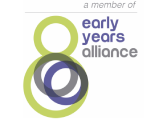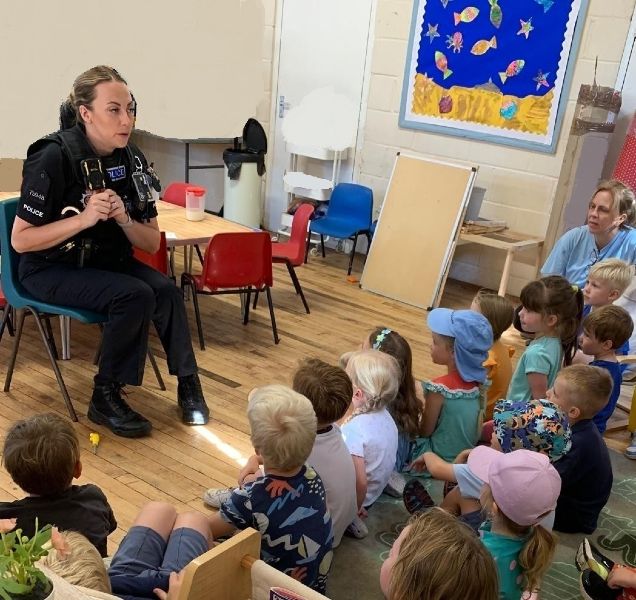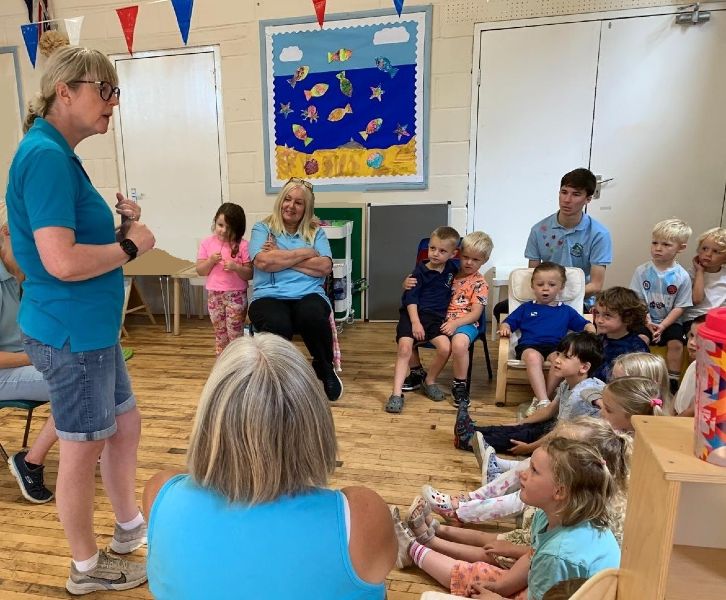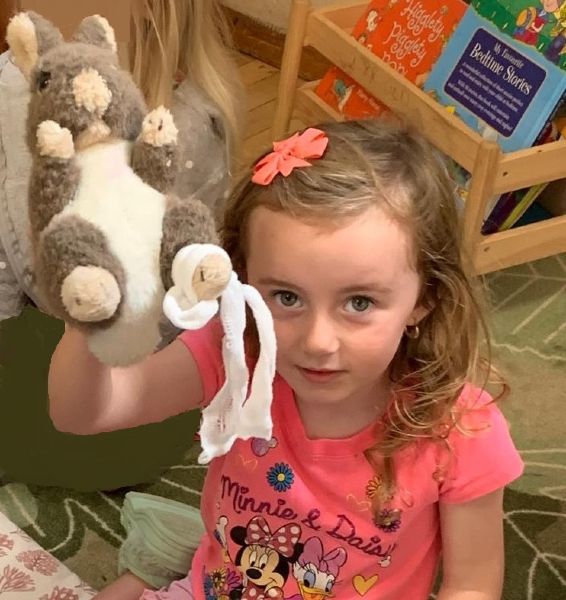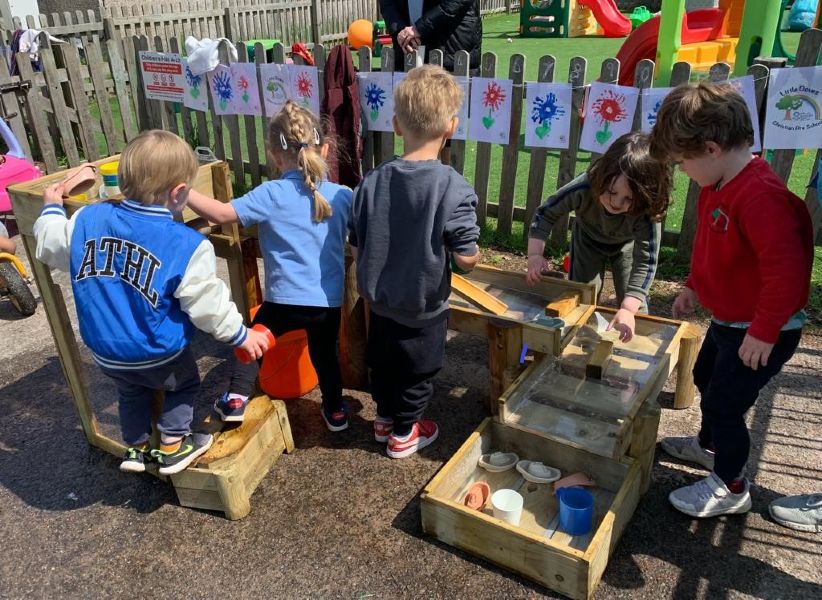Activities & Events
We are delighted to have visits this week from the people who help us;
our local police officer, vet and first aid trainer.

Our VE Day celebrations
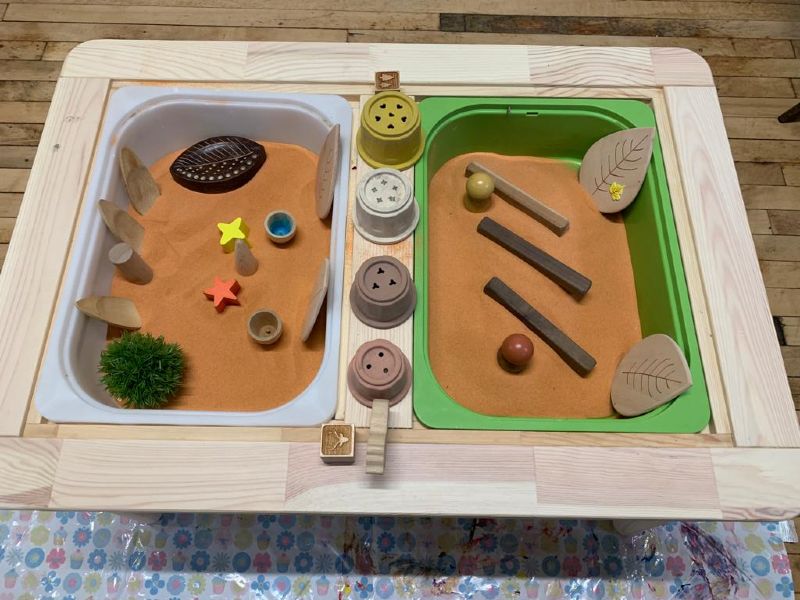
Sand
Playing with sand enables the children to develop their motor skills, build hand-eye coordination and strengthen their muscles. Holding the wooden scoop develops their finger muscles and filling the little bucket builds their hand and arm muscles. It also encourages problem solving and the satisfaction and pride of creating something new. Playing with the sand is a very social experience which develops a child’s language skills as they chat with the other children and as they learn to share while they explore and create.
Plants and seeds
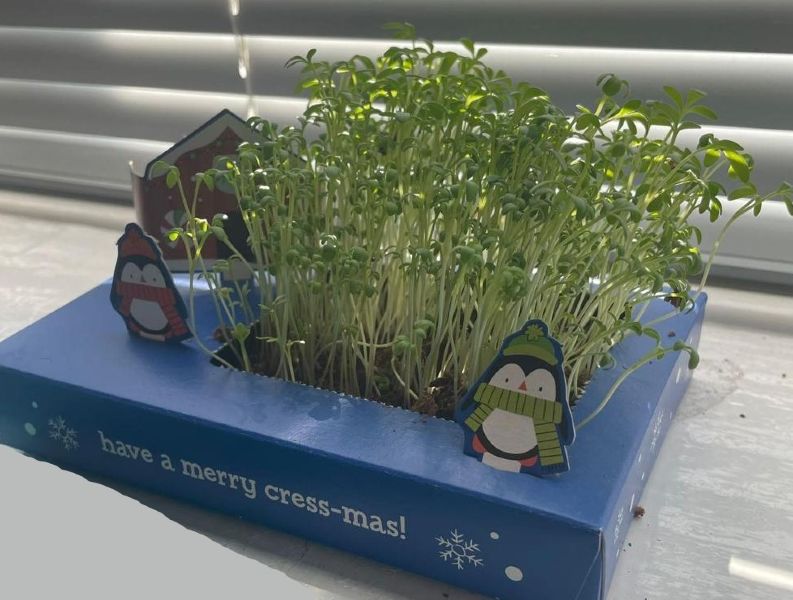
Digging, watering, planting seeds and plants stimulates a child’s senses as they touch, watch and smell the plants and seeds. It also encourages organisation, problem solving, pride and satisfaction.
Imaginative play
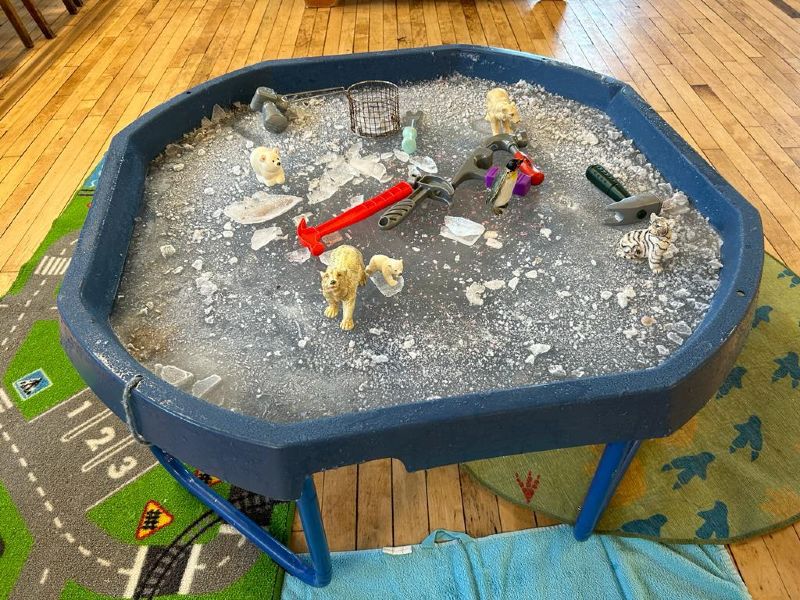
This provides the opportunity for the children to imagine being anywhere in the world. Whether it’s on one of the Arctic ice caps with ice everywhere and polar bears roaming around or whether its way back in time, deep in the forests with dinosaurs! It helps the children develop their critical thinking and problem solving, express their feelings and expand their language and social skills.
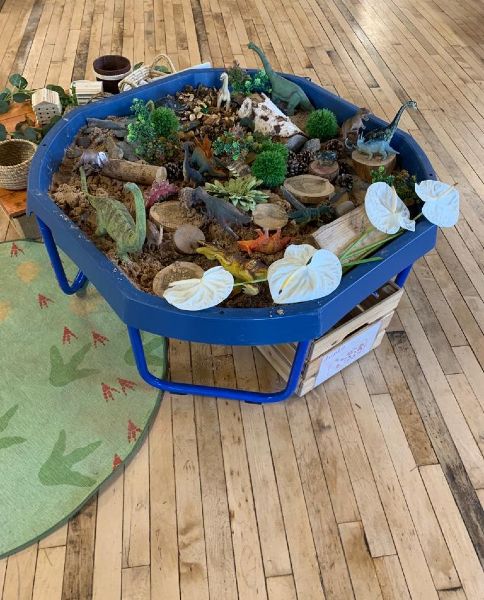 Alongside imaginative play, playing cafe/home helps the children with their fine motor development and hand eye coordination; sorting and stacking cups, undoing lids, holding the tea pot, pretending to drink from the tea cup. This all helps the small muscles in the hand and wrist get stronger and gain more control for precision movements, providing a strong base for being able to hold a pencil later. This also helps their balance and gross motor muscle strength as they bend and stretch to put trays in the oven or open the microwave.
Alongside imaginative play, playing cafe/home helps the children with their fine motor development and hand eye coordination; sorting and stacking cups, undoing lids, holding the tea pot, pretending to drink from the tea cup. This all helps the small muscles in the hand and wrist get stronger and gain more control for precision movements, providing a strong base for being able to hold a pencil later. This also helps their balance and gross motor muscle strength as they bend and stretch to put trays in the oven or open the microwave.
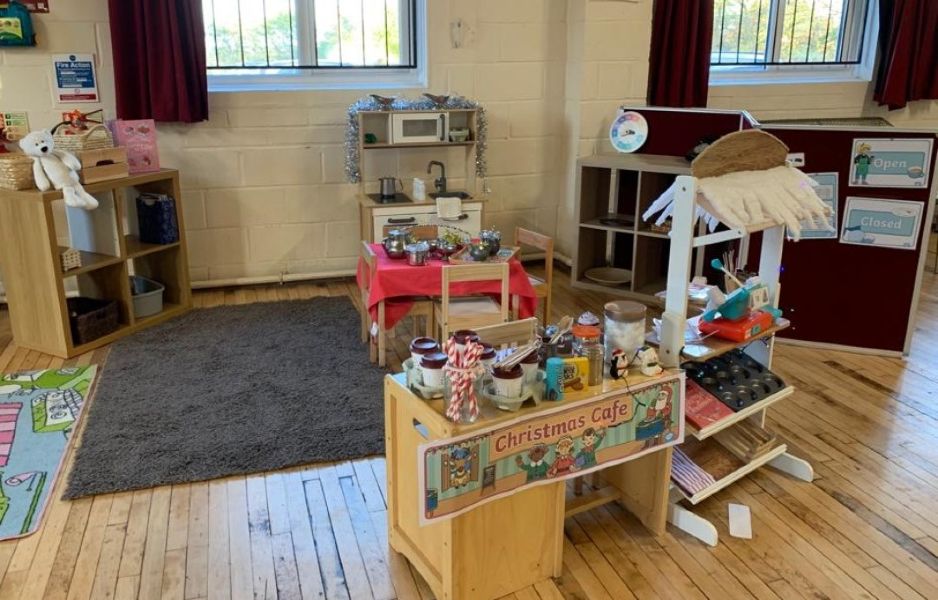
Playing with play dough helps the children develop their fine finger and hand muscles; rolling, moulding, flattening, pinching whilst providing lovely proprioceptive and tactile feedback. It gives the children opportunity to explore three dimensional shapes and develop their language skills as they chat with friends about what they are making. By pretending the play dough is something else, the children are using creative thinking to develop their cognitive pathways.
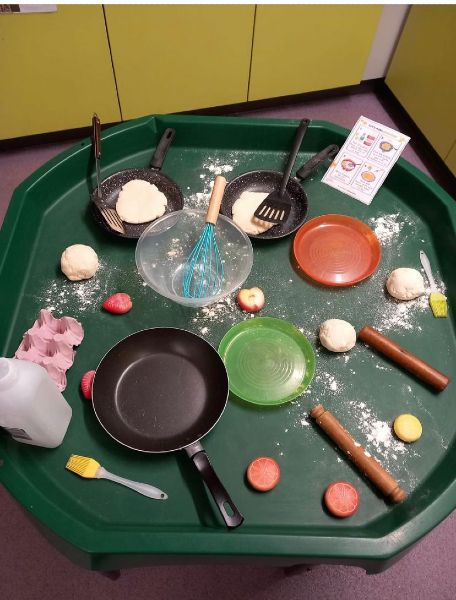
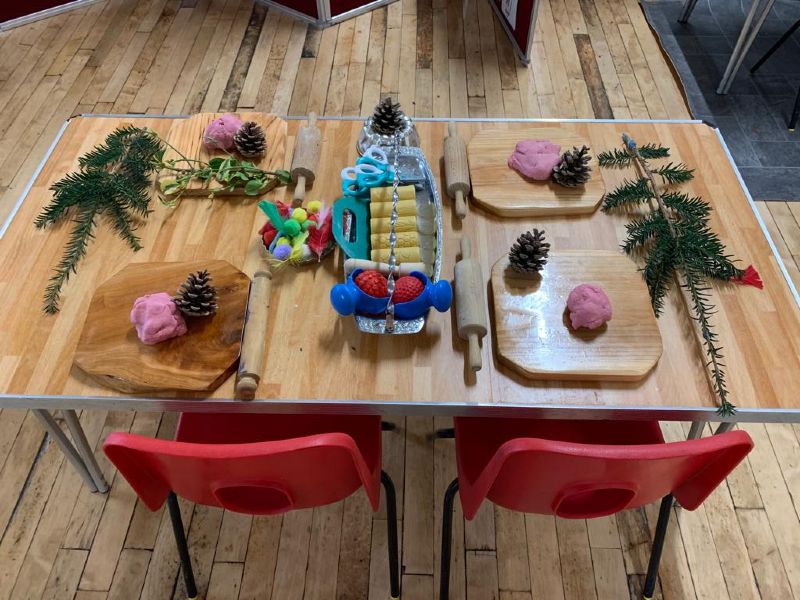
Painting
Painting is great fun and allows the children to be creative, convey emotions, explore colours and get messy!! It encourages colour recognition and curiosity of what happens when you mix colours. Developing a child’s finger, wrist and hand strength and hand eye co-ordination makes painting a key activity for pre-school children. It encourages pride and satisfaction when a beautiful piece of art is created.
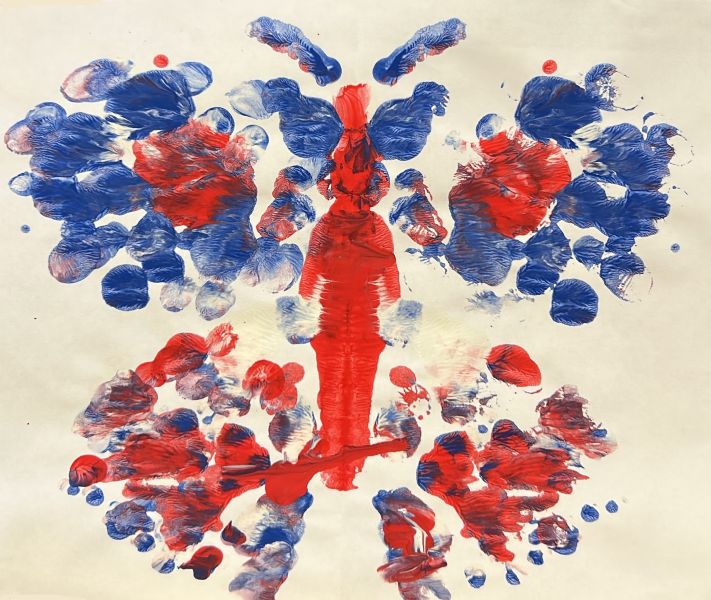
Water play
Water play helps the children develop their hand-eye co-ordination, strengthen their arm muscles as well as the small muscles in the hands and fingers. Being a flexible material, it is full of creative and sensory exploration stimulating many of a child’s senses; touch, sight, sound. It helps children experiment with many scientific concepts; will this sink or float, which bucket holds more water…. Chatting with friends and staff about what they are discovering provides opportunities for children to extend their vocabulary and develop their social skills.
Half termly topics
Each half term we have a topic and use story books to enhance the children’s understanding of the topic. For example, when our topics were 'Let’s explore the great outdoors' and 'Let’s explore growth', we incorporated The Very Hungry caterpillar story. This story explores change and growth with the children. As the number of items eaten by the caterpillar grows each day it teaches children counting and days of the week and also encourages healthy eating as too much sugary food gave the very hungry caterpillar stomach ache. The children are encouraged to join in with the repetitive and rhythmic words promoting language and social interaction.
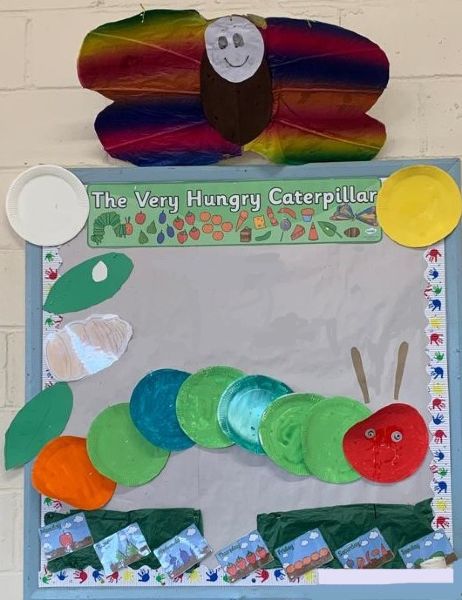
We also raised our very own Painted Lady butterflies.
33 caterpillars arrived in the butterfly kit together with their own nutritious food. The caterpillars were transferred gently into the little vials with food being added into each vial (the brown squidgy stuff at the bottom). 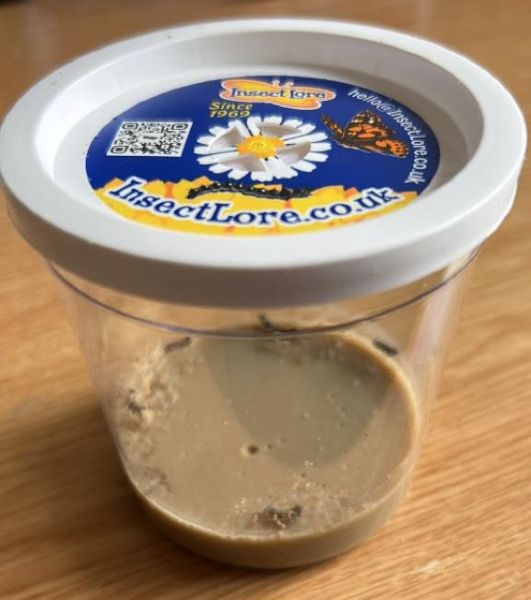
They were then left undisturbed, out of the sunlight to grow. During this time the caterpillars shed their exoskeletons 4 times and grew up to 10 times their original size. 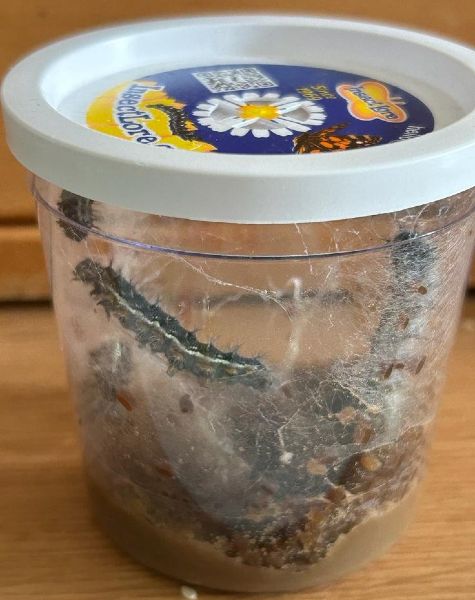
After 7 – 10 days the caterpillars started hanging upside down as they hardened into chrysalides. 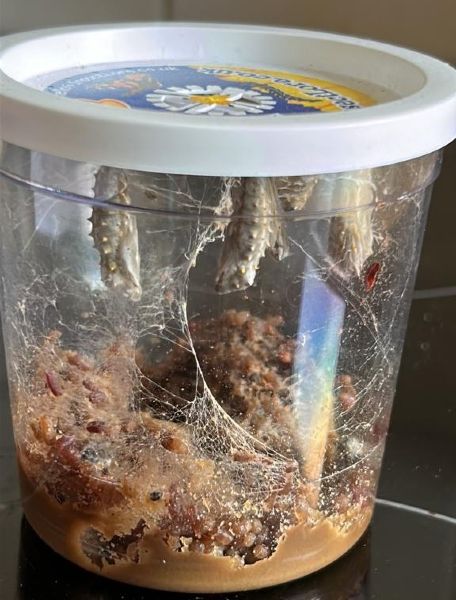
The crystalides were then transferred into the butterfly habitat, removing any silk threads from them so their wings would not get tangled up when they emerged as butterflies. They were given fruit to eat. 
After about another 7 -10 days they grew into beautiful butterflies. 
About 2-3 days after they emerged as butterflies, they were realised into the Little Doves garden.


This was an amazing opportunity to help the children understand the world around them, teaching them how animals go through changes in appearance during their life time and giving the children a huge sense of achievement and satisfaction when the amazing butterflies finally emerge.
